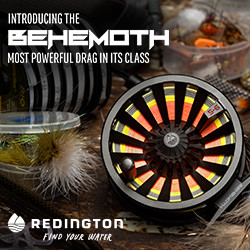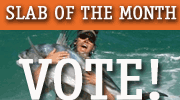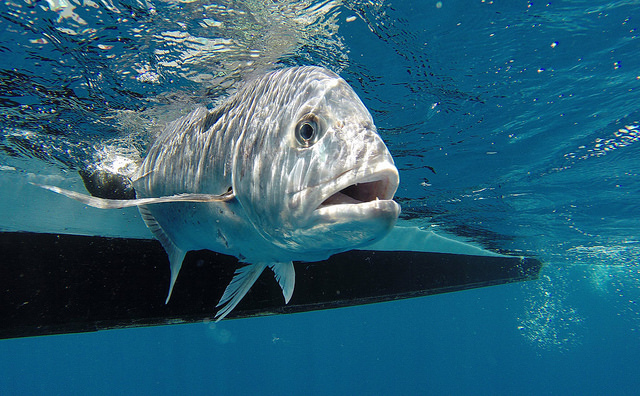
Here is an overview from Dr. Andy Danylchuk as his team embarks on an upcoming research trip to Kiritimati.
In 2014 a research trip to Kiritimati quickly changed focus from bonefish to giant trevally (GTs). This switch was prompted by a growing emphasis for targeting GTs and conservation concerns raised by stakeholders. During that trip, research was conducted to begin examining the physical and physiological impacts of angling with the intention of using the results to begin building best practices for the catch-and-release of GTs, not only for Kiritimati, but also throughout their range. This is critical since the popularity of GTs is increasing as evident by posts on social media, launching of angler groups specifically targeting GTs, and articles in conventional popular media outlets.
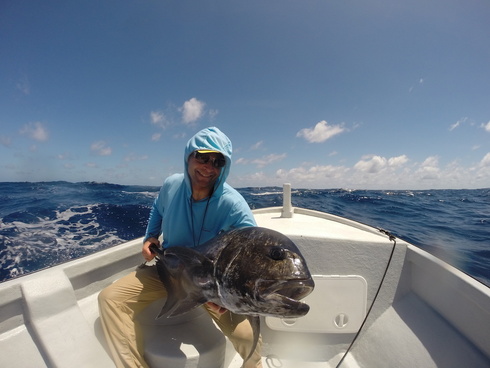
We're now headed back to Kiritmati with larger team of researchers to undertake a much more directed study on GTs. Specifically, we will be looking at the degree of physical injury caused by baits commonly used for GTs. We will examine different hook types and configurations to systematically determine the bait type that minimized physical injury without significantly reducing hook ups. We will also be continuing to examine the physiological stresses associated with angling through the use of non-lethal blood sampling and on-site blood processing. This will allow us to determine whether there is a direct relationship between parameters such as angling time and physiological stress. The outcome of this component will be best practices linked to selecting tackle and techniques allow anglers to bring GTs to the boat without ‘maxing’ them out physiologically. One specific element of the angling event we will be testing is the impacts of air exposure.

The last component of the GT work will involve the use of custom data logging devices that will pop-up of the fish following a short duration of time following releases. These pop-up data loggers will collect depth and activity patterns related to swimming performance – something that can vary related to the degree of handling stress. Acoustic transmitters in the pop-up device will allow us to manually track the fish following release and then locate the device once it is floating at the surface. Although this element of the project will be challenging, it will net the first ever data on the short term activity patterns of GTs plus it will lead to a more robust set of best practices for this now highly prized fish species.
 Thursday, August 13, 2015 at 12:08AM
Thursday, August 13, 2015 at 12:08AM 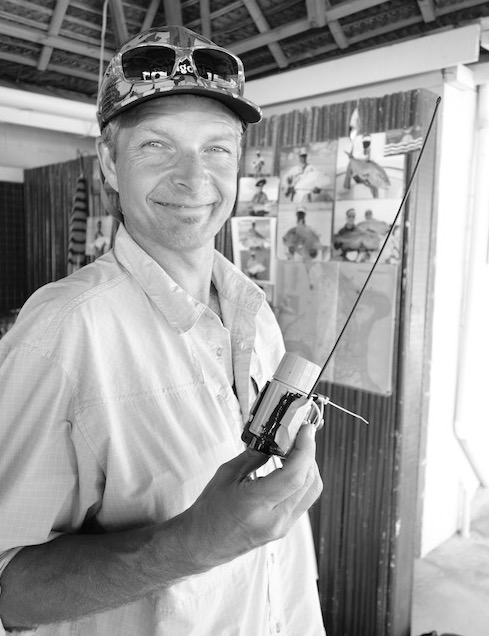 Photo: B. Bennett
Photo: B. Bennett andy danylchuk,
andy danylchuk,  fly fishing podcast,
fly fishing podcast,  the venturing angler in
the venturing angler in  Podcast
Podcast 
